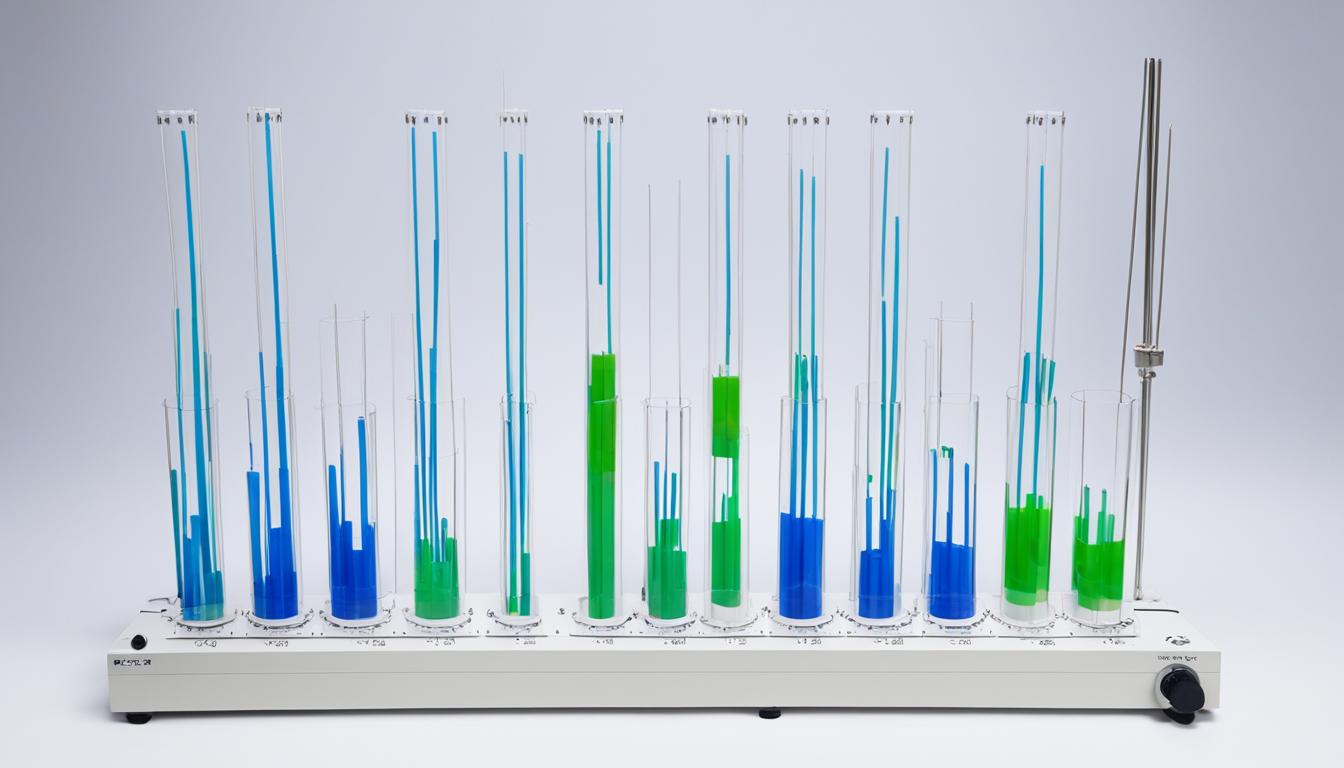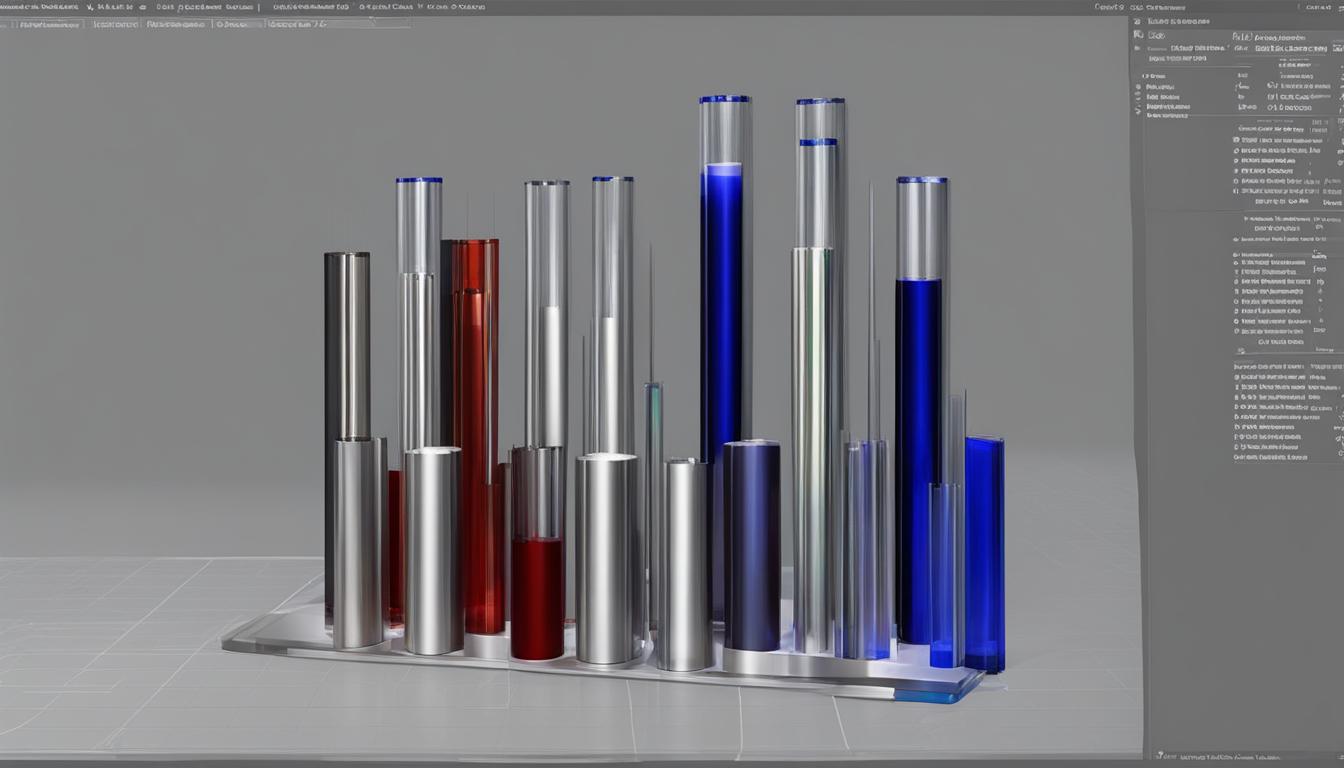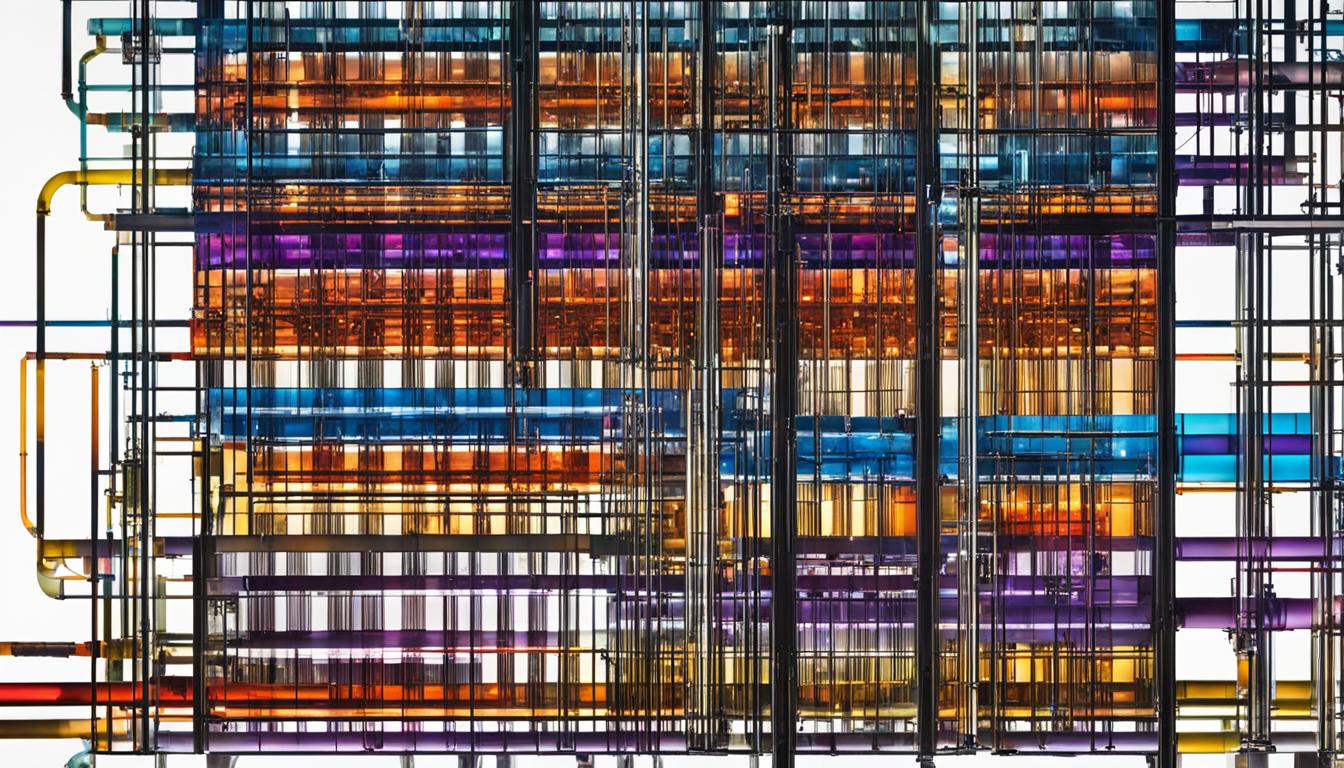Introduction
Overview of GC columns and their importance in gas chromatography
Gas chromatography (GC) is a widely used analytical technique that separates and analyzes volatile compounds in a sample. It is commonly used in various industries, including pharmaceuticals, environmental analysis, forensics, and petrochemicals, among others. The success and accuracy of GC depend greatly on the selection of the appropriate GC column.
GC columns are the heart of the gas chromatography system. They play a crucial role in the separation and detection of target compounds in a sample. The columns are packed or capillary in nature, each with its own unique characteristics and applications.
Types of GC columns
There are two main types of GC columns: packed columns and capillary columns.
Packed columns
Packed columns are short, thick tubes made of glass or stainless steel and filled with a solid support material, such as diatomaceous earth or molecular sieves. These columns were widely used in the early stages of gas chromatography and are still utilized in certain applications today. Packed columns offer advantages like high sample capacity and the ability to handle complex mixtures. However, they have limited efficiency and may not be suitable for separating highly volatile compounds.
Capillary columns
Capillary columns, on the other hand, are long, narrow tubes made of fused silica, which is chemically inert and can withstand high temperatures. These columns revolutionized gas chromatography when they were introduced in the 1980s. Capillary columns offer several advantages over packed columns, including higher separation efficiency, better resolution, and the ability to handle a wide range of samples, including highly volatile and thermally labile compounds. They are the most commonly used type of GC column today.
Capillary columns can be further categorized into non-polar, polar, and specialty phases based on the stationary phase coated on the inner wall of the column. Non-polar columns are ideal for separating non-polar compounds, while polar columns are used for polar compounds. Specialty phases, such as chiral columns, offer selectivity for specific compounds or enantiomers.

In conclusion, the selection of the appropriate GC column is crucial for achieving optimal method performance in gas chromatography. Packed columns and capillary columns are the two main types of GC columns, each with its own advantages and applications. Capillary columns, particularly with specialty phases, offer superior separation efficiency and versatility compared to packed columns. Understanding the characteristics and applications of different GC columns is essential for successful analysis in various industries.
Packed Columns
Explanation of packed columns and their characteristics
Packed columns, also known as packed beds, are short, thick columns made of glass or stainless steel tubes. They have been used since the early stages of gas chromatography. Packed columns contain a particulate substance called packing material, which gives them their characteristic broad peak shapes.
Advantages and disadvantages of packed columns
Advantages:
- Packed columns can handle large sample volumes, making them suitable for applications where a large amount of sample needs to be analyzed.
- They are not susceptible to contamination, which is important for maintaining accurate and reliable results.
- Packed columns are still used today in official analytical methods and for gas analysis.
Disadvantages:
- Packed columns have lower separation performance compared to capillary columns. This means that they may not be able to separate complex mixtures as effectively.
- Due to their larger size, packed columns require a longer analysis time compared to capillary columns.
- The broad peak shapes produced by packed columns can make it more challenging to accurately determine peak concentrations.
Overall, while packed columns may not offer the same level of separation performance as capillary columns, they still have their place in gas chromatography. Their ability to handle large sample volumes and their resistance to contamination make them suitable for specific applications. However, for high-sensitivity analysis and superior separation performance, capillary columns are the prevailing choice in gas chromatography today.
Capillary Columns
Explanation of Capillary Columns and Their Characteristics
Capillary columns are a type of column used in gas chromatography. Unlike packed columns, capillary columns are longer and thinner, typically made of fused silica. The name “capillary” comes from the small diameter of the column, which is often less than 0.5 mm.
Capillary columns are packed with a stationary phase, which is a thin film coating the inner surface of the column. This stationary phase is what interacts with the sample components and separates them based on their different affinities. The stationary phase can be selected to target specific analytes or classes of compounds, allowing for greater selectivity in the separation process.
Capillary columns offer several advantages over packed columns, primarily due to their high separation efficiency. The narrow diameter of the column allows for greater resolution and better separation of complex mixtures. Capillary columns also provide higher sensitivity, as the smaller sample volume required leads to greater peak heights and narrower peak widths.
Advantages and Disadvantages of Capillary Columns
Advantages:
- Capillary columns offer superior separation performance, allowing for better resolution of complex mixtures.
- The high separation efficiency of capillary columns allows for more sensitive analysis, particularly for low-level analytes.
- Capillary columns require smaller sample volumes, reducing the amount of sample needed for analysis.
- Capillary columns can accommodate a wide range of applications, including environmental analysis, pharmaceutical analysis, and food and beverage analysis.
Disadvantages:
- Capillary columns can be more prone to contamination, as they have a larger surface area compared to packed columns. This requires careful attention to column conditioning and storage procedures.
- Capillary columns are more fragile compared to packed columns, requiring proper handling to prevent damage.
- Capillary columns may have a higher initial cost compared to packed columns, mainly due to the specialized manufacturing processes and materials required.
Overall, capillary columns offer superior separation performance and higher sensitivity compared to packed columns, making them the preferred choice in gas chromatography for many applications. However, the higher cost and greater fragility of capillary columns should be considered when selecting a column for analysis, ensuring that they are compatible with the specific requirements of the analytical method and the sample matrix.

In conclusion, both packed and capillary columns have their advantages and disadvantages in gas chromatography. Packed columns are suitable for applications where large sample volumes need to be analyzed and contamination is a concern. On the other hand, capillary columns provide higher separation performance and sensitivity. The choice between packed and capillary columns depends on the specific analytical requirements, and it is important to consider factors such as sample volume, analyte complexity, and sensitivity when selecting the appropriate column for gas chromatography analysis.
GC Column Selection Guide
Factors to consider when selecting a GC column
When selecting a GC column, there are several factors that need to be considered in order to achieve optimal method performance. These include:
1. Stationary Phase: The stationary phase is a key component of the GC column and determines its selectivity. Different stationary phases have different affinities for analytes, so it is important to choose a column with the appropriate stationary phase for your specific application.
2. Column Dimensions: The length, internal diameter, and film thickness of the column all impact its performance. Longer columns provide higher resolution, while wider columns can handle higher sample volumes. The film thickness affects the speed of analysis and sample capacity.
3. Temperature Range: The temperature range of the column is important for maintaining the stability and effectiveness of the column. Make sure the column can withstand the desired temperature range for your analysis.
4. Sample Type: The nature of the sample being analyzed will also influence the choice of GC column. Different analytes require different column selectivities to achieve accurate separations.
Choosing the right column for specific applications
Now that we have discussed the factors to consider when selecting a GC column, let’s take a look at some specific applications and the recommended columns for each:
1. Environmental Analysis: For the analysis of volatile organic compounds (VOCs) in air, water, and soil samples, a nonpolar column with low bleed is recommended. Examples of suitable columns include DB-1, DB-5, and DB-624.
2. Pharmaceutical Analysis: In pharmaceutical analysis, it is important to achieve high resolution and peak symmetry. Columns with polar stationary phases like DB-17, HP-5MS, or Rxi-5Sil MS are commonly used for this application.
3. Petrochemical Analysis: Petrochemical samples often contain a wide range of compounds with varying polarities. Therefore, a column with intermediate polarity, such as DB-225, Rxi-17Sil MS, or Rtx-1, is recommended for these analyses.
4. Food and Flavor Analysis: In food and flavor analysis, it is crucial to have high resolution and sensitivity. Recommended columns include DB-WAX, Rxi-5Sil MS, and Rtx-WAX.
5. Forensic Analysis: Forensic analysis often involves the detection and identification of trace amounts of substances. For this application, columns with high sensitivity and low bleed, such as DB-1701, DB-35MS, and Rxi-1ms, are commonly used.
By considering these factors and selecting the appropriate GC column for your specific application, you can achieve optimal method performance and reliable results. Remember to consult the manufacturer’s column selection guide and take into account the specific requirements of your analysis.

Non-Polar Phases
Explanation of non-polar GC phases
Non-polar GC phases are stationary phases that have low polarity. These phases are made up of non-polar bonded groups, such as methyl or phenyl groups, which interact minimally with analytes. As a result, non-polar columns are best suited for the analysis of non-polar compounds.
The non-polar nature of these columns allows for minimal interaction between the column and the analytes, resulting in faster elution times and less retention. This makes non-polar columns ideal for the separation of volatile compounds and compounds with low boiling points.
In summary, non-polar GC columns are crucial tools in the analysis of non-polar compounds in various industries and applications. These columns provide fast and efficient separations, allowing for accurate quantification and identification of analytes. When selecting a non-polar GC column, it is important to consider factors such as the stationary phase, column dimensions, temperature range, and sample type to ensure optimal method performance.
Polar Phases
Explanation of polar GC phases
Polar GC phases play a crucial role in gas chromatography column selection as they are most effective in separating polar compounds. The principle of “likes dissolves like” guides the choice of these phases, where polar columns are selected for the analysis of polar compounds, while non-polar columns are best suited for non-polar compounds.
The stationary phase of a GC column is the key determinant of its selectivity. Different stationary phases exhibit varying affinities for analytes, thus influencing the separation of sample components. Polar phases have a greater affinity for polar compounds due to their ability to establish hydrogen bonding and dipole-dipole interactions. This leads to effective separation of polar analytes in complex mixtures.
Aromatic Phases
Explanation of aromatic GC phases
Aromatic GC phases are another type of stationary phase that is commonly used in gas chromatography column selection. These phases are known for their ability to separate aromatic compounds effectively. Aromatic compounds contain a benzene ring or other aromatic functional groups, which makes them more compatible with stationary phases that exhibit pi-pi interactions.
The pi-pi interactions occur between the aromatic compounds and the stationary phase, allowing for better separation. This interaction is based on the principle that aromatic compounds are more likely to interact with other aromatic compounds. The use of aromatic phases in GC columns helps to achieve efficient separation of compounds with aromatic structures.
Specialized Phases
Explanation of specialized GC phases (chiral, temperature-programmable, cross-linked, etc.)
In addition to polar phases, there are several specialized GC phases that offer unique capabilities for specific applications. These specialized phases include chiral columns, temperature-programmable columns, and cross-linked columns.
Chiral GC phases are designed for the separation of enantiomers, which are mirror-image isomers of a molecule. Chiral columns contain a stationary phase that exhibits chirality, meaning it has a specific handedness or asymmetry. This enables the separation of enantiomers based on their interactions with the stationary phase, allowing for enantioselective analysis. Chiral GC columns are commonly used in pharmaceutical, environmental, and forensic applications, where the separation of enantiomers is of utmost importance.
Temperature-programmable GC columns are designed to provide greater flexibility in temperature control during analysis. These columns contain a stationary phase that exhibits variable selectivity at different temperatures. By programming the temperature profile during the analysis, it is possible to achieve specific separations and optimize the resolution of target compounds. Temperature-programmable GC columns are particularly useful in complex sample matrices where analytes with different polarities and boiling points need to be resolved.

Cross-linked GC columns are columns where the stationary phase is chemically cross-linked, resulting in a higher thermal stability. Cross-linking enhances the column’s resistance to thermal degradation, making it suitable for high-temperature applications or when analyzing thermally unstable compounds. These columns offer improved longevity and can withstand extended exposure to high temperatures without significant degradation of performance.
Conclusion
Summary of different types of GC columns and their uses
In gas chromatography, two main types of columns are used: packed columns and capillary columns. Packed columns are short, thick columns made of glass or stainless steel tubes and have been used since the early stages of gas chromatography. Capillary columns, on the other hand, are made of fused silica and offer higher resolution and sensitivity.
In addition to these main types, there are also specialized GC phases available for specific applications. Chiral GC phases are designed for the separation of enantiomers and are commonly used in pharmaceutical, environmental, and forensic applications. Temperature-programmable GC columns provide flexibility in temperature control and are useful in complex sample matrices. Cross-linked GC columns offer higher thermal stability and are suitable for high-temperature applications or when analyzing thermally unstable compounds.
Importance of selecting the right GC column for optimal method performance
The selection of the right GC column is crucial for achieving optimal method performance. Different columns have different selectivities and characteristics, which can greatly impact the separation and analysis of target compounds. By carefully considering factors such as column chemistry, temperature range, and sample matrix, it is possible to choose the appropriate GC column that will yield accurate and reliable results.
Using the wrong column can lead to poor resolution, decreased sensitivity, and even inaccurate quantification. It is therefore important to consult the manufacturer’s column selection guide and consider the specific needs of the analysis. By selecting the right GC column, analysts can optimize separation, improve method performance, and ensure the success of their gas chromatographic analyses.
In conclusion, gas chromatography columns play a critical role in the separation and analysis of compounds. Packed columns and capillary columns are the main types used, with specialized GC phases offering unique capabilities for specific applications. Selecting the right GC column is essential for achieving accurate and reliable results, and careful consideration of column chemistry, temperature range, and sample matrix is necessary. By choosing the appropriate GC column, analysts can optimize separation and achieve optimal method performance.

